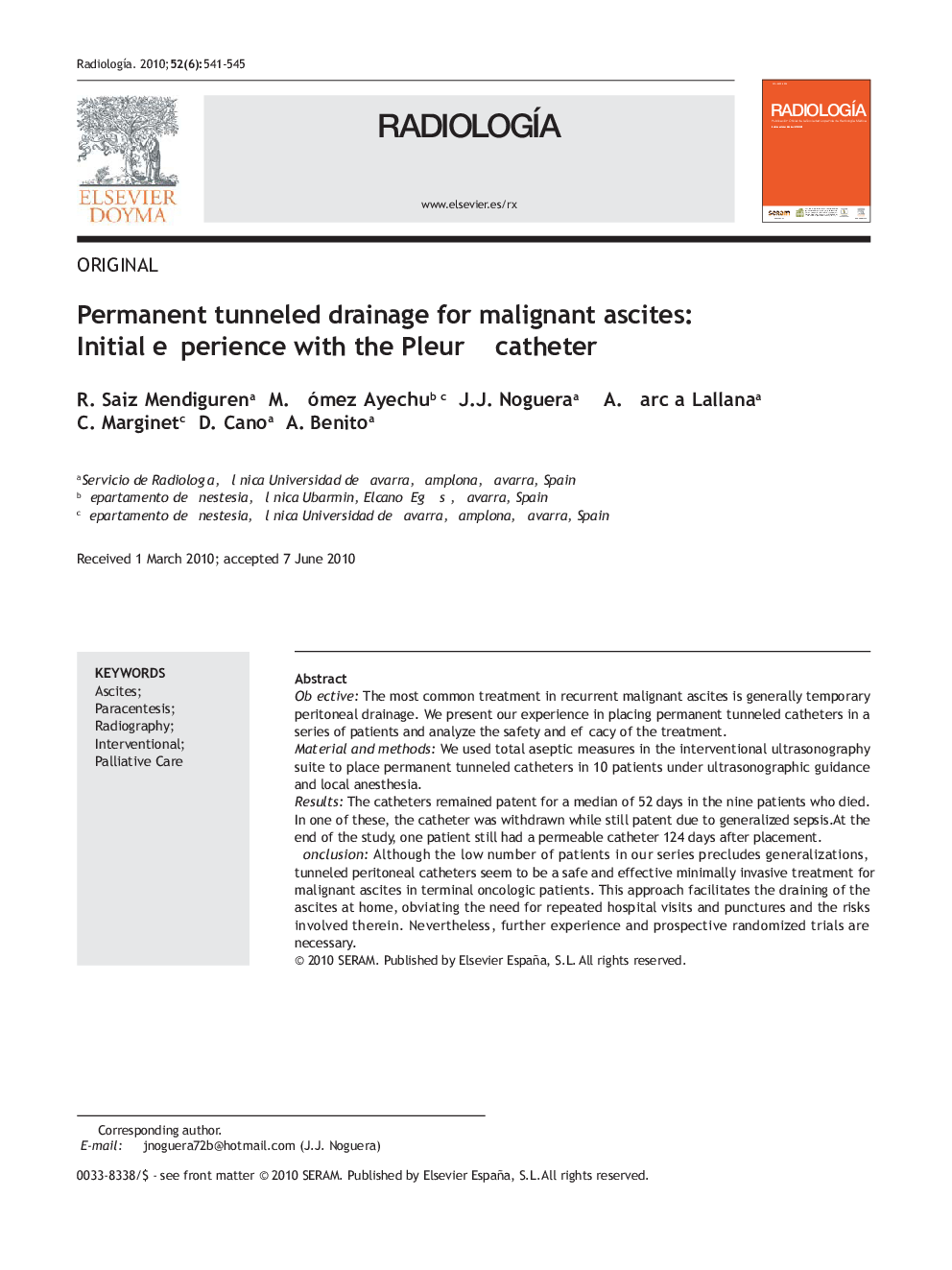| Article ID | Journal | Published Year | Pages | File Type |
|---|---|---|---|---|
| 4246640 | Radiología (English Edition) | 2010 | 5 Pages |
ObjectiveThe most common treatment in recurrent malignant ascites is generally temporary peritoneal drainage. We present our experience in placing permanent tunneled catheters in a series of patients and analyze the safety and efficacy of the treatment.Material and methodsWe used total aseptic measures in the interventional ultrasonography suite to place permanent tunneled catheters in 10 patients under ultrasonographic guidance and local anesthesia.ResultsThe catheters remained patent for a median of 52 days in the nine patients who died. In one of these, the catheter was withdrawn while still patent due to generalized sepsis. At the end of the study, one patient still had a permeable catheter 124 days after placement.ConclusionAlthough the low number of patients in our series precludes generalizations, tunneled peritoneal catheters seem to be a safe and effective minimally invasive treatment for malignant ascites in terminal oncologic patients. This approach facilitates the draining of the ascites at home, obviating the need for repeated hospital visits and punctures and the risks involved therein. Nevertheless, further experience and prospective randomized trials are necessary.
ResumenObjetivoEl tratamiento más utilizado en la ascitis maligna de repetición es generalmente el drenaje peritoneal temporal. Presentamos nuestra experiencia en la colocación de catéteres tunelizados permanentes en una serie de pacientes y el análisis de la seguridad y efectividad del mismo.Material y métodosEl procedimiento se llevó a cabo en una serie de 10 pacientes, con medidas de asepsia total, en la sala de ecografías dedicada a intervencionismo, únicamente con control ecográfico y bajo anestesia local.ResultadosLos catéteres se mantuvieron permeables una mediana de 52 días en los 9 pacientes que fallecieron. A uno de estos pacientes se le retiró el catéter, que permanecía permeable, por una sepsis generalizada. Un paciente permanecía con el catéter permeable a la conclusión del estudio 124 días tras la colocación.ConclusiónA pesar del escaso número de pacientes, el catéter peritoneal tunelizado parece ser un procedimiento seguro, efectivo y mínimamente invasivo para el tratamiento de la ascitis maligna en pacientes oncológicos terminales, facilitando la evacuación de la ascitis en el domicilio sin necesidad de acudir a un centro hospitalario y evitando punciones de repetición con el consiguiente riesgo para el paciente. No obstante, sería necesaria una mayor experiencia y estudios prospectivos aleatorizados.
